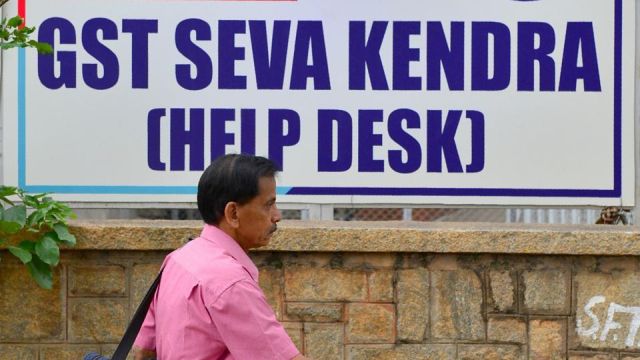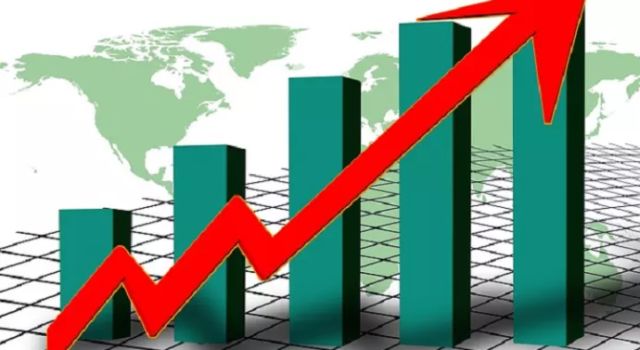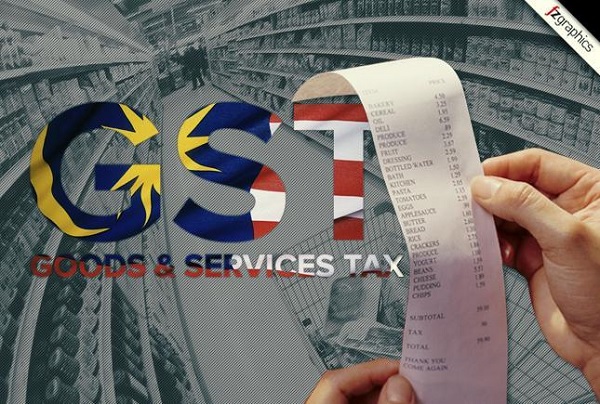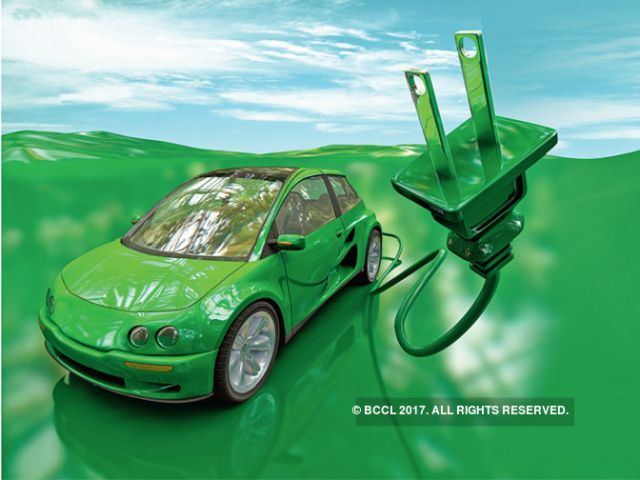
by admin | May 25, 2021 | Corporate, Corporate Governance, Corporate Reports, Economy, News
 New Delhi : Calling on the Central government for urgent steps to avert a “mini social crisis”, exporters on Tuesday said the inordinate delay in getting Goods and Services Tax (GST) refunds was causing difficulties in paying salaries and Diwali bonuses to their workers owing to the working capital crunch.
New Delhi : Calling on the Central government for urgent steps to avert a “mini social crisis”, exporters on Tuesday said the inordinate delay in getting Goods and Services Tax (GST) refunds was causing difficulties in paying salaries and Diwali bonuses to their workers owing to the working capital crunch.
The exporters’ bodies conveyed their concerns at a meeting here with Revenue Secretary Hasmukh Adhia, who is chairman of the Committee on Exports to address GST-related problems.
“All this is happening when we are in the middle of festival season, and the workers employed in the trading and manufacturing units have to be paid their dues including Diwali bonuses,” P.K Shah, former Chairman and currently board member, Engineering Exports Promotion Council (EEPC), said in a statement following Tuesday’s meeting.
EEPC said the authorities should release at least 90 per cent of refunds immediately after the shipments and allow the verification and adjustment be done at a later stage.
“This will help small and medium exporters to tide over their blockage of funds, and allow them to pay salaries and bonuses of workers in the festival season. Our members have pointed out that they are in a desperate situation and hence the government must intervene to avoid a mini social crisis,” it said.
The Federation of Indian Exports Organisations (FIEO) pointed out that the deferment in mandatory filing of GST return forms, as well as extreme difficulty in receiving tax returns, was hurting exports.
This may lead to a Rs 65,000-crore worth of exports being stuck by the end of the year, FIEO Director General Ajay Sahai said.
Order books of exporters have taken a hit two months after the roll-out of the GST regime, with estimates putting the impact to up to 15 per cent across industries and product categories.
According to an assessment by the FIEO, the large fall was in export orders that were meant to be delivered until October. Beyond October, this may rise to 20 per cent, as exports during Christmas and New Year may be affected, the association said.
—IANS

by admin | May 25, 2021 | Opinions
 By Amit Kapoor,
By Amit Kapoor,
It is becoming really hard to be optimistic about the Indian economy. As T.N. Ninan pointed out last week, it has been six years since the economy breached the seven per cent growth rate mark. There have been repeated forecasts in these last six years of regaining those glory days of 2003-11, when India managed to grow at an annual rate of 8.4 percent.
But in every quarter, there existed a convenient transitory phenomenon to explain away the poor growth statistics. Initially, it was the sluggish world economy with a couple of drought years in between and of late, it has been the after effects of demonetisation and the hastily implemented Goods and Services Tax (GST).
Whatever the reasons, the numbers that have been emerging in the last two weeks are quite damning for the short-term prospects of the economy. In Q1 of 2017-18, GDP grew at 5.7 per cent, making it the fifth consecutive quarter in which growth rates have fallen. The country’s industrial activity as measured by the Index of Industrial Activity (IIP) has merely expanded by 1.7 per cent between April and July as against 6.5 per cent over the same period last year. The weakness on the industrial front is undeniable.
Inflation figures have also not been promising. Contrary to the warnings a few months ago of a deflationary trend across the economy, the Consumer Price Index (CPI) grew by 3.36 per cent in August after rising by 2.36 per cent in July. Therefore, after three months of a fall in inflation numbers before July, the prices are back to their usual trend of moving northward. This eliminates all possibility of RBI making any further rate cuts in its next policy review. So, the monetary route of giving the economy a boost is all but closed.
Anyhow, the problems of the economy are such that they cannot be merely addressed through the monetary route. There are four engines that usually drive growth in an economy and currently all are sputtering on fumes. These are: private investment, private consumption, exports and government expenditure.
Private investment has taken the worst hit over the last few years, especially since the problem of bad loans with banks started spiralling out of control. Gross fixed capital formation as a percentage of GDP has consistently fallen from its peak of 34.31 per cent in 2011-12 to 29.55 in 2015-16. Since banks are wary to lend out fresh loans on account of their rising non-performing assets (NPAs), these figures are not expected to see any upturn any time soon.
To add to the misery, private consumption trends are also not helping. Growth has been merely 6.7 per cent this quarter over Q1 of last year — a six quarter low. This just might be a short-term blip as people might have postponed spending due the implementation of GST, but being complacent and waiting for consumption to pick up is obviously not the best way forward.
Exports, which had been the leading driver in India’s “beyond-seven” growth years, growing at rates of 20 per cent and 16 per cent in 2009-10 and 2010-11 respectively, have fallen to single digit growth rates since. In fact, in 2014-15 exports fell by 5.3 per cent. However, recent reports show that it has grown by a little over 10 per cent over the last year. However, as Swaminathan Aiyer pointed out recently, it will still not suffice for India’s growth aspirations as no country has achieved a growth rate of over 7 per cent or more unless its exports had grown over 15 per cent annually.
Finally, and most important of all government expenditure, which has been the saving grace until now seems to be running out of steam. Government spending has grown sharply since the first quarter of last year and has even increased by double digits post-demonetisation peaking at around 17 per cent last quarter. This has been a major factor in propping up whatever little growth the economy has witnessed. However, in the process the government had already exhausted 92.4 per cent of its annual target of fiscal deficit. To meet the 3.2 per cent target, it will be forced to cut expenditure. Therefore, the fiscal route of reviving the economy also seems to be closing along with the monetary one unless the government decides to breach the fiscal target, which will damage its hard-earned credibility and is ill-advised.
So, what can the government do to move closer to the oft-promised seven per cent growth reality? It is clear that the problem is not transitory. It seems more structural in nature and needs a structural solution. The problem of NPAs cannot be over-emphasised. Bad loans have become the Achilles’ heel for the government that it has been unable to remedy. Private investment has been held up because of it and it is undeniably a vital driver of economic growth. Government investment alone cannot push higher growth as is slowly becoming evident.
Therefore, recapitalisation of banks should be the topmost priority on the government’s agenda and it should brainstorm ways of doing so. Disinvestments can be a source of revenue for the same and since the stock markets are on a high, it just might be a viable option. There are no easy answers on the best way to revive the economy, but whichever path the government chooses will have a lot of say in determining the future of the Indian economy and the magnitude of an even bigger problem which hardly anyone is discussing yet: that of growing unemployment. More importantly, for the government, all of these cumulative issues will have a lot of say in determining the 2019 election outcomes. One can only hope for the best.
(Amit Kapoor is chair, Institute for Competitiveness, India. The views expressed are personal. He can be contacted at amit.kapoor@competitiveness.in and tweets @kautiliya. Chirag Yadav, researcher, Institute for Competitiveness has contributed to the article)
—IANS

by admin | May 25, 2021 | Business, Economy, Large Enterprise, Markets, News
 New Delhi : Traders with up to Rs 75 lakh annual turnover, who are yet to register themselves under GST, can do so now until September 30, as the Goods and Services Tax Network (GSTN) on Monday opened a window for such registrations, it said.
New Delhi : Traders with up to Rs 75 lakh annual turnover, who are yet to register themselves under GST, can do so now until September 30, as the Goods and Services Tax Network (GSTN) on Monday opened a window for such registrations, it said.
“Many taxpayers who migrated after August 16 could not avail this facility. To make this facility available to all those who could not opt for Composition, the facility has been opened again by the GST Council,” the GSTN said in a statement on Sunday.
The facility is available to both migrated as well as new registered taxpayers. This is also open to those who registered afresh under GST but did not avail the facility at the time of registration.
Small taxpayers, who have below Rs 75 lakh turnover, can avail the Composition Scheme at the Goods and Services Tax (GST) portal that will allow them to file returns once in a quarter to reduce the burden of compliance as against monthly returns to be filed by other businesses.
Those who opt for Composition during this period will get this facility from October 1 for the current financial year. For the period prior to October 1, the taxpayers will be treated as normal taxpayer and will have to file monthly return for the period until September 30.
“Any person who has been granted registration on a provisional basis or regular basis and has turnover not exceeding Rs 75 lakh and who wishes to opt for the Composition levy under Section 10 of the Act, is required to electronically file an intimation, duly signed or verified through electronic verification code, at the GST portal on or before September 30,” GSTN CEO Prakash Kumar said.
To opt for the Composition scheme, the taxpayer needs to log into his account at the GST portal www.gst.gov.in and select the “Application to opt for the Composition Scheme” under the “Services” menu. After filling in the form, he has to submit the application using digital signature or e-signature or electronic verification code.
—IANS

by admin | May 25, 2021 | Business, Corporate, Corporate Buzz, Emerging Businesses, Medium Enterprise, SMEs
 By Meghna Mittal,
By Meghna Mittal,
New Delhi : Exporters are having a tough time since the roll-out of the new indirect tax regime as the online facility to claim refunds is not yet available, with many even postponing shipments as they grapple with low funds, stakeholders and experts have said.
The worries are greater for small and medium exporters who have a turnover of less than Rs 20 crore as their cost of working capital has significantly risen with refunds not coming so far under the Goods and Services Tax (GST) regime.
“We estimate an additional working capital of Rs 1.5 to Rs 2 crore for us. At present, refunds can’t be claimed as Goods and Services Tax Network (GSTN) system is not yet operational. We have to pay GST on procurement and also keep control on all vendors to ensure that they pay GST,” Vilas Phule, CFO, Magna Steyr India, which exports engineering services in the automobile sector, told IANS.
The company with a monthly turnover of Rs 6 crore to Rs 8 crore, exports services worth Rs 4 crore to Rs 6 crore every month.
Certainly, this was putting exporters in a lot of working capital pressure, he added.
Jigar Doshi, Partner, SKP Business Consulting, said: “At present, exporters are unable to file refund claims online as no facility/utility is available at GSTN website and is unknown as to when it will be made available. Now, working capital blockage is proving to be big hurdle particularly for small exporters, who do not have deep pockets.”
GST expert Pritam Mahure said, “In GST regime, exporters are facing challenges as the upfront exemption is not available and given this working capital of exporters is getting blocked. I hope that the government forms a high level committee to address their challenges or else the working capital blockage can derail the struggling exports scenario in India.”
In the previous indirect tax regime, exporters enjoyed upfront tax exemption on goods to be exported. But under GST, exporters are procuring goods and services on payment of GST. This credit of GST, which is available with exporters is supposed to be claimed as refund.
Under GST, there is also Integrated GST applicable on the export turnover, for which there are two methods available — one to export without payment of GST (under cover of Letter of Undertaking or Bond) and second with payment of IGST and then claim refund of it.
“In our case, we have 80 per cent export of services. Hence, GST paid on procurement of services which needs to be claimed as refunds. If exemptions, similar to the one given under previous indirect tax regime, are granted then the funds blockage can be optimised along with reduction in unnecessary administrative work for paying GST and then claiming refunds,” Phule said.
The former GSTN Chairman Navin Kumar, who retired recently, said, “For exporters, it is not yet available. For exporters there is going to be a separate form where he can claim refund of IGST. Currently the online facility is not active on GST portal.”
Amar Kulkarni, CFO, Hoerbiger India, which exports gas compressor valves for the petroleum industry, said, “Given the working capital pressure, many exporters are postponing the exports and are struggling for funds. This entire process of claiming refund by exporter can be eased through upfront exemption.”
The exporter is required to capture details of monthly export for GST return and this is a tedious work, he said.
Another exporter Samir Oke, who exports thermocol for refrigerators admitted that his company was facing a problem of blockage of working capital with GST.
“Even, in case of procurement from unregistered vendors, the company is required to pay GST which further leads to increase in working capital requirement,” Oke, CFO, K K Nag Pvt Ltd, told IANS.
“We faced numerous challenges in obtaining a Letter of Undertaking for exporting goods without IGST. The said procedure was expected to be online but practically we had to visit and follow up with the authorities for the same,” he added.
Doshi said, “Prior to GST regime, there was no requirement to obtain Letter of Undertaking for exporting services, which is mandatory in GST regime and given this service exporters face numerous challenges. The government should identify key challenges faced by exporters and address the same immediately.”
Further, the refund of GST can be claimed only if the vendors pay GST and this is required to be tracked by the company, which is leading to more hassles for the exporters.
“There are various requirement as far as input tax credit is concerned. It is very difficult to communicate with numerous vendors and ensure that they are paying GST. The company is required to ensure that vendors are paying and filing returns in case of a registered vendor. In case of unregistered vendor, the company not only has pay the GST but is also required to raise the tax invoice and payment voucher, which is a tedious and time consuming process,” Oke said.
Hoerbiger India said, “We are being held responsible for compliance by vendor, which is unreasonable as SME exporters don’t have manpower to ensure all these.”
To add to the woes, recurring breakdowns of the GSTN system are making things worse for the exporters.
“GSTN system is not ready and we are facing numerous errors in the system during filing of GST returns,” Magna Steyr India said.
Hoerbiger India said, “Exporters are investing a lot of time during return filing process as the GSTN system is not robust. If such problems continue then the company will have to focus only on returns on that export.”
There is no surety on whether the tools or website will work on a particular day as due to traffic surge GSTN system was down multiple times, thus exporters are facing challenges in filing of GST returns, Oke protested.
Anita Rastogi, Partner, PwC – GST and Indirect Tax, said, ” The largest issue being faced by an exporter is that of additional working capital requirement. There are teething problems being faced by exporters on the procedural side. It is important that the interests of exporters are safeguarded and this should be taken on priority by the government.”
(Meghna Mittal can be reached at meghna.m@ians.in)
—IANS

by admin | May 25, 2021 | Business, Corporate, Corporate Buzz, Corporate Governance, Large Enterprise
 New Delhi : Ahead of the GST Council’s next meeting on Saturday, the Society of Manufacturers of Electric Vehicles (SMEV) has called for reducing the GST of 28 per cent on batteries. It has pointed out the anomaly of the higher tax on these when sold separately as against 12 per cent when sold with the vehicles.
New Delhi : Ahead of the GST Council’s next meeting on Saturday, the Society of Manufacturers of Electric Vehicles (SMEV) has called for reducing the GST of 28 per cent on batteries. It has pointed out the anomaly of the higher tax on these when sold separately as against 12 per cent when sold with the vehicles.
“Lithium batteries usually need to be sold separately from the electric two-wheelers to give a choice of the batteries at the point of sale. Such batteries have become significantly costlier because of the 28 per cent GST on them, leading to a big dampener for the electric two-wheeler customers,” an SMEV release said on Friday following its annual general meeting (AGM) here earlier this week.
“SMEV is requesting uniform GST rate for EVs (electric vehicles) and batteries at point of sale,” it said.
At its meeting with the Department of Heavy Industry (DHI) and NITI Aayog officials, the SMEV emphasised the need for incentives and appropriate policy measures to encourage wider use of electric vehicles in the country.
“Short-term measures and incentives for the existing manufacturers are the need of the hour,” SMEV Director (Corporate Affairs) Sohinder Gill said in a statement.
“The FAME (Faster Adoption and Manufacturing of Hybrid and Electric Vehicles) India scheme is expiring this month and we request the government to announce its continuation at the earliest,” he added.
The FAME scheme, extended earlier for six months till September-end provides incentives for purchase of electric and hybrid vehicles in particular areas.
The SMEV also called for prioritising the development charging infrastructure, which is mostly limited to the private sector.
“The government needs to build a robust charging infrastructure for mass usages of EVs,” the statement said.
Meanwhile, Heavy Industries Minister Anant Geete has said that the government is considering the extension of the FAME scheme by six more months.
“Most likley, we will extend it for another six months after the end of September. Earlier, the phase one of the FAME scheme was extended by six months,” Geete said at the 57th SIAM Annual Convention here on Thursday.
—IANS

 New Delhi : Calling on the Central government for urgent steps to avert a “mini social crisis”, exporters on Tuesday said the inordinate delay in getting Goods and Services Tax (GST) refunds was causing difficulties in paying salaries and Diwali bonuses to their workers owing to the working capital crunch.
New Delhi : Calling on the Central government for urgent steps to avert a “mini social crisis”, exporters on Tuesday said the inordinate delay in getting Goods and Services Tax (GST) refunds was causing difficulties in paying salaries and Diwali bonuses to their workers owing to the working capital crunch.


